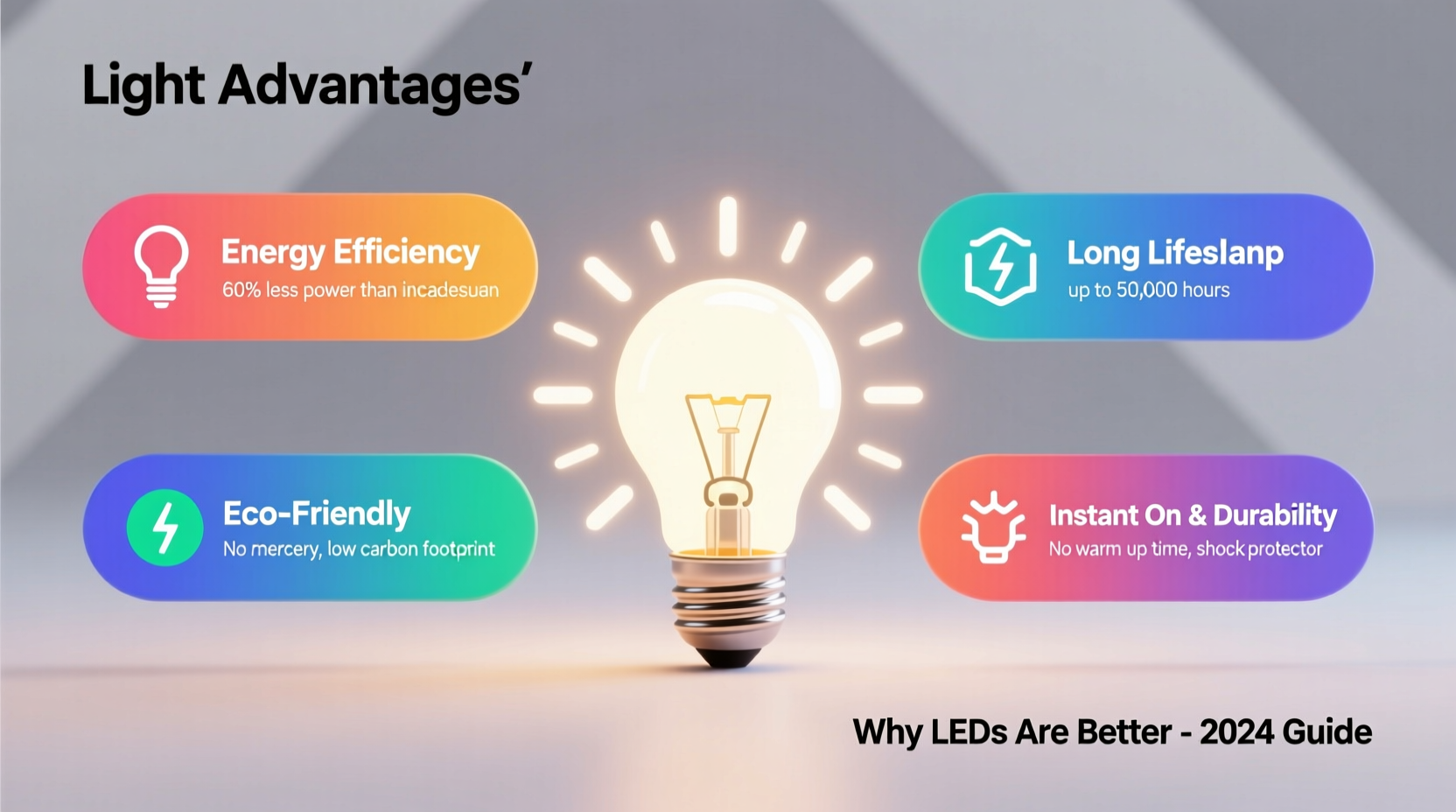Lighting technology has evolved dramatically over the past few decades. From incandescent bulbs that dominated homes for most of the 20th century to compact fluorescents (CFLs), each advancement brought incremental improvements. But none have been as transformative as light-emitting diodes (LEDs). Today, LEDs are not just an alternative—they are the standard in residential, commercial, and industrial lighting. The reasons are clear: superior efficiency, longer lifespan, lower maintenance, and reduced environmental impact. Understanding why LEDs are better means looking beyond brightness and into how they perform across real-world applications.
Energy Efficiency That Saves Money

One of the most compelling reasons to switch to LED lighting is energy efficiency. LEDs consume significantly less electricity than traditional lighting options. While an incandescent bulb might use 60 watts to produce a certain level of brightness, an equivalent LED uses only 8–10 watts. This dramatic reduction translates directly into lower utility bills.
The U.S. Department of Energy estimates that widespread adoption of LED lighting could save about 348 terawatt-hours of electricity by 2027—equivalent to the annual output of 44 large power plants. For homeowners, this means savings of $20–$30 per bulb over its lifetime compared to incandescents. Businesses with extensive lighting systems see even greater returns through reduced operational costs.
Lifespan Far Exceeds Traditional Bulbs
LEDs last significantly longer than other types of bulbs. A typical incandescent lasts about 1,000 hours, while a CFL may reach 8,000 hours. In contrast, quality LED bulbs can operate for 25,000 to 50,000 hours or more. That’s up to 20 years of regular use without needing replacement.
This extended lifespan reduces the frequency of replacements, which is especially valuable in hard-to-reach areas such as vaulted ceilings, stairwells, or commercial facilities. Fewer replacements mean lower labor costs and less disruption in environments like hospitals, schools, and offices.
“Switching to LEDs isn’t just about saving on energy—it’s about reducing maintenance overhead. In commercial settings, that’s where the real ROI kicks in.” — Dr. Alan Reeves, Lighting Systems Engineer at MIT Sustainable Design Lab
Environmental and Safety Advantages
Unlike CFLs, LEDs do not contain mercury—a hazardous substance that complicates disposal and poses health risks if a bulb breaks. Their solid-state design also makes them more durable and resistant to shock, vibration, and extreme temperatures.
Additionally, because LEDs emit very little heat compared to incandescent or halogen bulbs, they reduce fire risk and lower cooling loads in enclosed spaces. This thermal efficiency contributes indirectly to HVAC energy savings, particularly in warmer climates or tightly sealed buildings.
With no ultraviolet (UV) or infrared (IR) radiation emitted, LEDs are also safer for illuminating sensitive materials such as artwork, fabrics, and archival documents, where light-induced degradation is a concern.
Performance and Flexibility in Real Applications
Modern LEDs offer exceptional control over color temperature, brightness, and beam direction. Available in warm white (2700K), cool white (4000K), and daylight (5000K+), LEDs can be tailored to suit different moods and functions—from cozy living rooms to alert-focused workspaces.
They are fully dimmable (when paired with compatible dimmer switches) and achieve full brightness instantly, unlike CFLs that require warm-up time. Smart LED systems integrate seamlessly with home automation platforms, allowing scheduling, remote control, and adaptive lighting based on occupancy or natural light levels.
| Bulb Type | Average Lifespan (hours) | Watts Used (for 800 lumens) | Heat Output | Contains Mercury? |
|---|---|---|---|---|
| Incandescent | 1,000 | 60 W | Very High | No |
| CFL | 8,000 | 14 W | Moderate | Yes |
| LED | 25,000–50,000 | 9 W | Low | No |
Mini Case Study: Municipal Street Lighting Upgrade
The city of Ann Arbor, Michigan, began replacing all streetlights with LEDs in 2015. Over 4,000 fixtures were upgraded within two years. The results were immediate: a 53% reduction in energy consumption and annual savings of over $200,000. Maintenance calls dropped by 70%, as failures became rare. Citizens reported improved visibility and safety due to consistent, brighter illumination. The project paid for itself in under five years and continues to deliver long-term fiscal and environmental benefits.
Step-by-Step Guide to Transitioning to LED Lighting
Switching to LED doesn't have to happen overnight. A strategic approach ensures optimal performance and cost-effectiveness.
- Assess Your Current Lighting: Walk through your home or facility and note bulb types, wattages, and usage patterns. Identify frequently used fixtures.
- Prioritize High-Use Areas: Start with lights that stay on for several hours daily—hallways, kitchens, outdoor lights.
- Choose the Right Color Temperature: Use warm white (2700K–3000K) for relaxing spaces; cooler tones (4000K+) for task-oriented areas.
- Check Dimmer Compatibility: If using dimmers, ensure both the LED bulb and switch are labeled as dimmable and compatible.
- Dispose of Old Bulbs Properly: Recycle CFLs at designated centers; incandescents can usually be trashed (check local rules).
- Monitor Savings: Track your electricity bills over the next few months to quantify reductions.
Frequently Asked Questions
Are LED bulbs worth the higher upfront cost?
Yes. Although LEDs cost more initially, their long lifespan and low energy use result in significant savings over time. A single LED can save $50–$100 in electricity and replacement costs over its life compared to an incandescent.
Can I use LED bulbs in enclosed fixtures?
Only if they are rated for enclosed fixtures. Some LEDs are sensitive to heat buildup, which can shorten their lifespan. Always check the packaging or manufacturer specifications before installation.
Do LEDs work in cold environments?
Yes—unlike CFLs, which struggle in low temperatures, LEDs perform exceptionally well in cold conditions. This makes them ideal for outdoor lighting, garages, and refrigerated display cases.
Conclusion: Make the Switch with Confidence
LEDs represent a smarter, safer, and more sustainable way to light our world. Whether you're motivated by lower electricity bills, fewer bulb changes, or reducing your carbon footprint, the advantages are undeniable. With advancements in quality and affordability, there’s never been a better time to upgrade.









 浙公网安备
33010002000092号
浙公网安备
33010002000092号 浙B2-20120091-4
浙B2-20120091-4
Comments
No comments yet. Why don't you start the discussion?